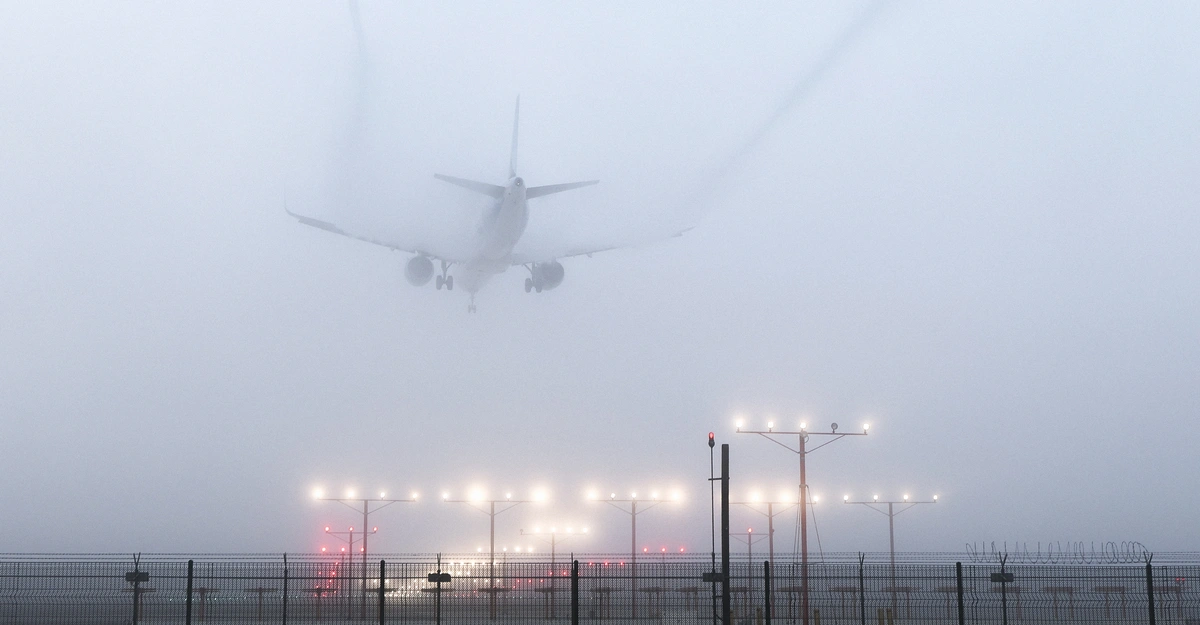Copyright The Atlantic

This is an edition of The Atlantic Daily, a newsletter that guides you through the biggest stories of the day, helps you discover new ideas, and recommends the best in culture. Sign up for it here. This past weekend, as I prepared to board a flight from Toronto to New York City, I looked down at my phone to find two pieces of news. One was that the Senate was readying a deal to end the ongoing government shutdown. The other was that my flight was delayed. I was lucky. Amid the broader chaos enveloping air travel in the United States these days, a delay of a couple of hours is manageable. Air traffic controllers have now gone without pay for 43 days, leading some to reportedly take a second job when they’re off the clock; to account for fatigue and compensate for the controllers who have left their job, the Federal Aviation Administration has deployed an emergency order mandating major reductions in daily domestic flights at 40 high-traffic airports. What began as a 4 percent reduction over the weekend is now a 6 percent reduction. Thousands of flights have been outright canceled. All government shutdowns produce a sort of hangover period once they end, as federal employees return from furlough and attempt to triage their accumulated work. This shutdown, the longest in U.S. history, is no different. Now that the House has passed legislation to end it, certain services will return immediately—some national parks, for example, have remained open at limited capacity throughout the shutdown in spite of staffing shortages. But flights in particular won’t be running smoothly for a while. “I’m hoping that if we get this shutdown resolved this week that the airlines and the FAA can get back to normal in time for the start of the Thanksgiving travel period,” Henry Harteveldt of Atmosphere Research Group told me yesterday. So far, the FAA’s emergency order remains in place, and there’s no guarantee that it will be lifted at the precise moment that the shutdown comes to an end. Even once airlines are operating at full capacity, they will need to pull off the complicated logistical project of repositioning crews and planes across the country. There’s also the question of back pay. The federal government is required, per a 2019 law called the Government Employee Fair Treatment Act, to send out paychecks at “the earliest date possible” after a shutdown ends, regardless of regular pay schedules. But even after employees receive their paychecks, it can take a while for their financial situation to return to normal. Some of this has to do with new burdens that workers take on during shutdowns, such as managing their kids’ child care, Rachel Snyderman, the managing director of economic policy at the Bipartisan Policy Center, told me. Transportation Secretary Sean Duffy said yesterday afternoon that air traffic controllers will receive 70 percent of their pay within 48 hours of the government reopening, and that he expects the rest to come within a week. Duffy also echoed Donald Trump’s exhortation that workers continue to work without pay. For these true “PATRIOTS,” the president wrote on Truth Social, “I won’t be able to send your money fast enough!” Trump added that those who don’t show up to work risk having their pay “substantially docked,” in apparent contravention of federal law. The shutdown’s effects are rippling throughout much of the country’s fundamental infrastructure. Because some cargo planes have been grounded, packages have experienced delays too. SNAP benefits, which the Trump administration said it would fund only in part this month, could be retroactively paid “upon the availability of federal funding,” according to an October memo from the U.S. Department of Agriculture, although there is no clear timeline for that disbursement. There is no timeline yet either for the many blue-state infrastructure projects that were canceled or put on hold by the Office of Management and Budget during the shutdown (clean-energy groups have teamed up with the city of St. Paul to sue the government over funding cuts to energy programs; the OMB did not respond to a request for comment). And anything that needs an application or an approval from the federal government—say, housing developments involving government-backed loans, or payments for fuel deliveries as part of the Low Income Home Energy Assistance Program, which subsidizes heating bills and other weather-related expenses—will likely take some time to ramp back up. In Pennsylvania, LIHEAP won’t reopen until early next month. In New York State, applications for those heating subsidies will not be accepted until November 24 at the earliest. And it’s already snowing. “Let’s get the job done, and let’s do it fast,” Senator Susan Collins said on Sunday of the shutdown’s prospective end. But despite the rhetorical victory lap from congressional Republicans about having bested their Democrat rivals, there is a bipartisan reality to the shutdown’s aftereffects. Voters in all states, of both parties, rely on the services that will soon creak back to life. Plus, the resolution that the House voted on this evening funds the government only through January. Air traffic controllers might need to hang on to those second jobs. Related: Here are three new stories from The Atlantic: Today’s News Evening Read All the Ostriches Must Die By Daniel Engber The police came at dawn. Karen Espersen watched them drive into the valley: more than 40 cruisers in a line. They were on a mission from the government. All of her ostriches must die. Karen and her business partner, Dave Bilinski, were standing in the outdoor pens of their farm in the mountains of Canada’s West Kootenay. The fate of their flock had been taken up by right-wing media, and had become another front in a spiritual war. An angry group of their supporters, with signs and walkie-talkies, gathered on the property. They’d set up a barricade to slow the cops’ advance: several logs laid across the dirt near the turnoff from the highway. The activists had been camping out for months; their numbers sometimes reached into the hundreds. They knew the government was saying that the ostriches had bird flu, but they were convinced that this was cover for some other, bigger scheme. Read the full article. More From The Atlantic Culture Break Take a look. These photos show the aurora borealis, or northern lights, on display in night skies across the Northern Hemisphere. Read. A new book about Chernobyl’s child victims shows the human cost of seeking technological dominance, Anastasia Edel writes. Play our daily crossword. Explore all of our newsletters here. Rafaela Jinich contributed to this newsletter.



